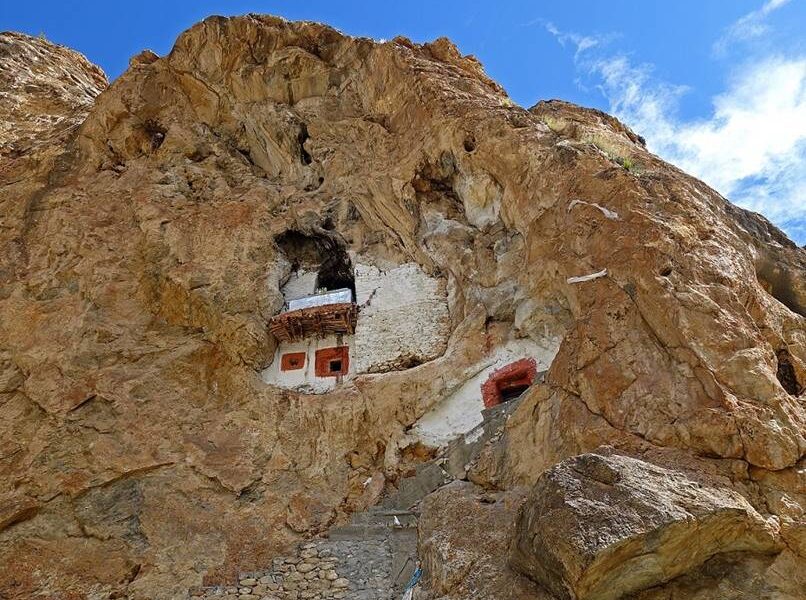Ladakh Underground Monks, nestled high in the Himalayas, are part of a region rich in spirituality, ancient traditions, and awe-inspiring landscapes. One of its most mystical and lesser-known aspects is the existence of underground monks—Buddhist ascetics who spend years meditating in remote hidden caves. These secret meditation caves of the Himalayas are not only sacred spaces but also offer insight into the deep-rooted spiritual practices that have shaped Ladakh’s cultural heritage for centuries. This blog post will unveil the mysteries of these monks and their spiritual retreats in the hidden caves of Ladakh.
1. Introduction to Ladakh’s Underground Monks and Hidden Meditation Caves
Ladakh’s rugged terrain, towering mountain ranges, and tranquil monasteries have long made it a center for Buddhist monastic life. Beyond the bustling monasteries, however, lies a more secretive world—one where Buddhist monks retreat into hidden caves to dedicate themselves to meditation and spiritual growth. Known as Ladakh’s underground monks, these ascetics live in isolation for months or even years, detached from the outside world.
The secret meditation caves of the Himalayas offer a unique glimpse into an ancient tradition. Far from civilization, these caves provide the perfect sanctuary for uninterrupted meditation. For spiritual seekers and adventurers alike, uncovering these hidden caves is both a physical journey and a spiritual pilgrimage.
2. The Spiritual Significance of Meditation Caves in Ladakh
The meditation caves scattered across the Himalayan region of Ladakh are not simply physical locations; they hold profound spiritual significance. Buddhist monks of Ladakh use these caves to escape the distractions of daily life, devoting their time to meditation, self-reflection, and the pursuit of enlightenment.
The caves symbolize seclusion and the quest for deeper spiritual truths. Many of these caves have been used for centuries by monks who believe that isolation in such remote environments allows for intense spiritual focus. This practice is deeply embedded in the Buddhist spirituality that thrives in Ladakh, where the Himalayan landscape itself is seen as a gateway to higher consciousness.
3. History of Monastic Life in Ladakh’s Secret Caves
Ladakh’s connection to Tibetan Buddhism is centuries old, and the tradition of monks retreating into hidden caves dates back to the earliest days of Buddhism in the region. These caves, located in the remote Zanskar Valley and other secluded spots, have served as homes to Buddhist hermits who practice ascetic lifestyles.
Historically, the caves were chosen for their remoteness and tranquility, making them ideal locations for meditation. Monks have long believed that withdrawing from society and meditating in such isolated settings fosters a deeper connection to the divine. The secret caves of Ladakh were often passed down through generations of monks, who would continue the practice of retreating into the caves for long periods.
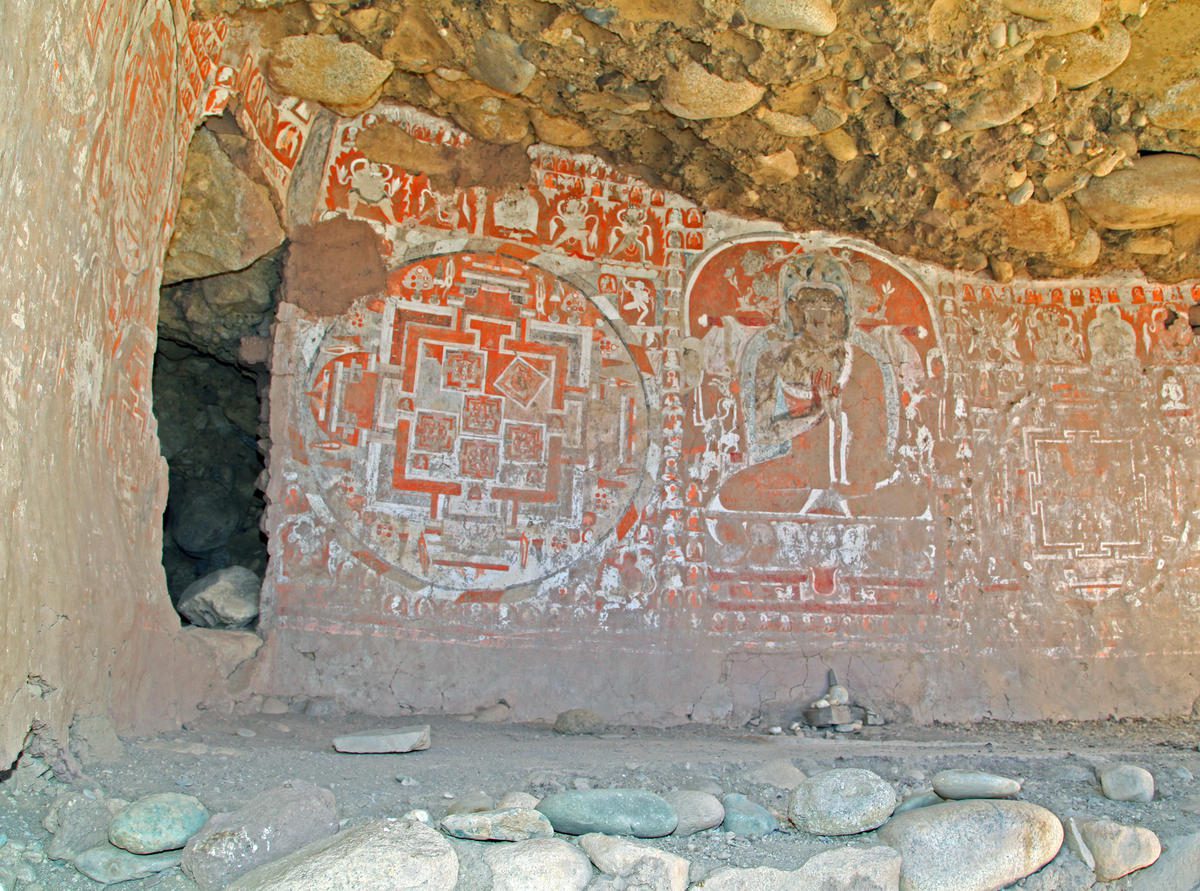
4. Trekking Routes to Discover Ladakh’s Hidden Meditation Caves
For adventurous travelers looking to uncover the hidden caves of Ladakh, several trekking routes lead to these sacred spaces. Popular treks include those in the Zanskar Valley and near Leh, which pass through remote monasteries and secret meditation caves tucked away in the mountains.
Here’s a look at some of the most popular trekking routes:
| Trekking Route | Duration | Difficulty | Key Highlights |
|---|---|---|---|
| Zanskar Valley Trek | 9-12 days | Challenging | Stunning landscapes, ancient monasteries, hidden meditation caves |
| Markha Valley Trek | 6-9 days | Moderate | Remote villages, chance to visit hidden meditation caves |
| Phuktal Monastery Trek | 4-5 days | Moderate | Phuktal Monastery, meditation caves used by monks |
| Stok Kangri Trek | 6-7 days | Difficult | Views of Stok Kangri Peak, access to meditation caves |
Each trek offers not only breathtaking views of the Himalayan mountains but also the opportunity to explore Buddhist spirituality up close by visiting caves where monks have meditated in isolation for centuries. For those seeking a more spiritual journey, these treks can also provide a connection to Buddhist practices.
5. Exploring Ladakh’s Spiritual Heritage Through Meditation Caves
Ladakh’s spiritual heritage is deeply connected to its meditation caves. The monks who live in these caves practice esoteric meditation techniques passed down through generations, preserving the rich Buddhist traditions of the region.
These caves are more than just shelters; they are spaces of transformation where monks practice deep meditation, often spending years in complete isolation. The isolation from society allows monks to practice more intensely, seeking to achieve higher states of consciousness. These monastic retreats form an integral part of Ladakh’s spiritual landscape, where the combination of nature and spirituality is most evident.
The caves, often located near sacred rivers or atop rugged cliffs, offer a deep spiritual connection between monks and their surroundings. This is a vital aspect of the Buddhist tradition in Ladakh, where nature is revered as part of the spiritual journey.

6. Ascetic Practices of Ladakh’s Monks in Isolation
The monks who retreat to Ladakh’s hidden caves live an ascetic lifestyle, foregoing worldly comforts to focus entirely on their spiritual growth. They survive with minimal resources, often relying on food and supplies delivered by local villagers or fellow monks. Their ascetic practices are a testament to their dedication to the Buddhist path.
Isolation allows them to practice rigorous meditation techniques for long periods, helping them achieve a state of enlightenment or nirvana. The caves serve as perfect environments for such pursuits, providing quiet, solitude, and natural beauty to support their spiritual development.
7. How Ladakh’s Monks Achieve Deep Meditation in Remote Caves
The meditation practices used by monks in Ladakh’s caves are rooted in ancient Buddhist techniques. By isolating themselves in these caves, monks can meditate without distractions, often for several hours or even days at a time. This allows them to focus on achieving samadhi—a state of deep concentration and spiritual awakening.
In these caves, monks practice various forms of meditation, including breath-focused meditation (Anapanasati) and visualization techniques (Mandala meditation). These esoteric practices are designed to help them transcend ordinary consciousness and reach a state of profound clarity and insight.
8. Visiting Ladakh’s Secret Meditation Caves: What You Need to Know
For travelers interested in visiting Ladakh’s hidden meditation caves, it’s essential to plan carefully. These caves are often in remote locations and require trekking, which can be physically demanding. Here are a few tips to ensure a successful journey:
When to Visit: The best time to visit Ladakh is during the summer months (June to September), when trekking routes are accessible. During the winter, many routes become impassable due to heavy snow.
Respecting the Sacred Spaces: When visiting meditation caves, it’s essential to remember that these are sacred sites for the monks who use them. Visitors should be respectful, avoid loud noises, and follow any guidance provided by local guides or monks.
Trekking Essentials: Ensure you have appropriate trekking gear, including sturdy boots, warm clothing, and plenty of water. Many of these routes are remote, so it’s crucial to be well-prepared.
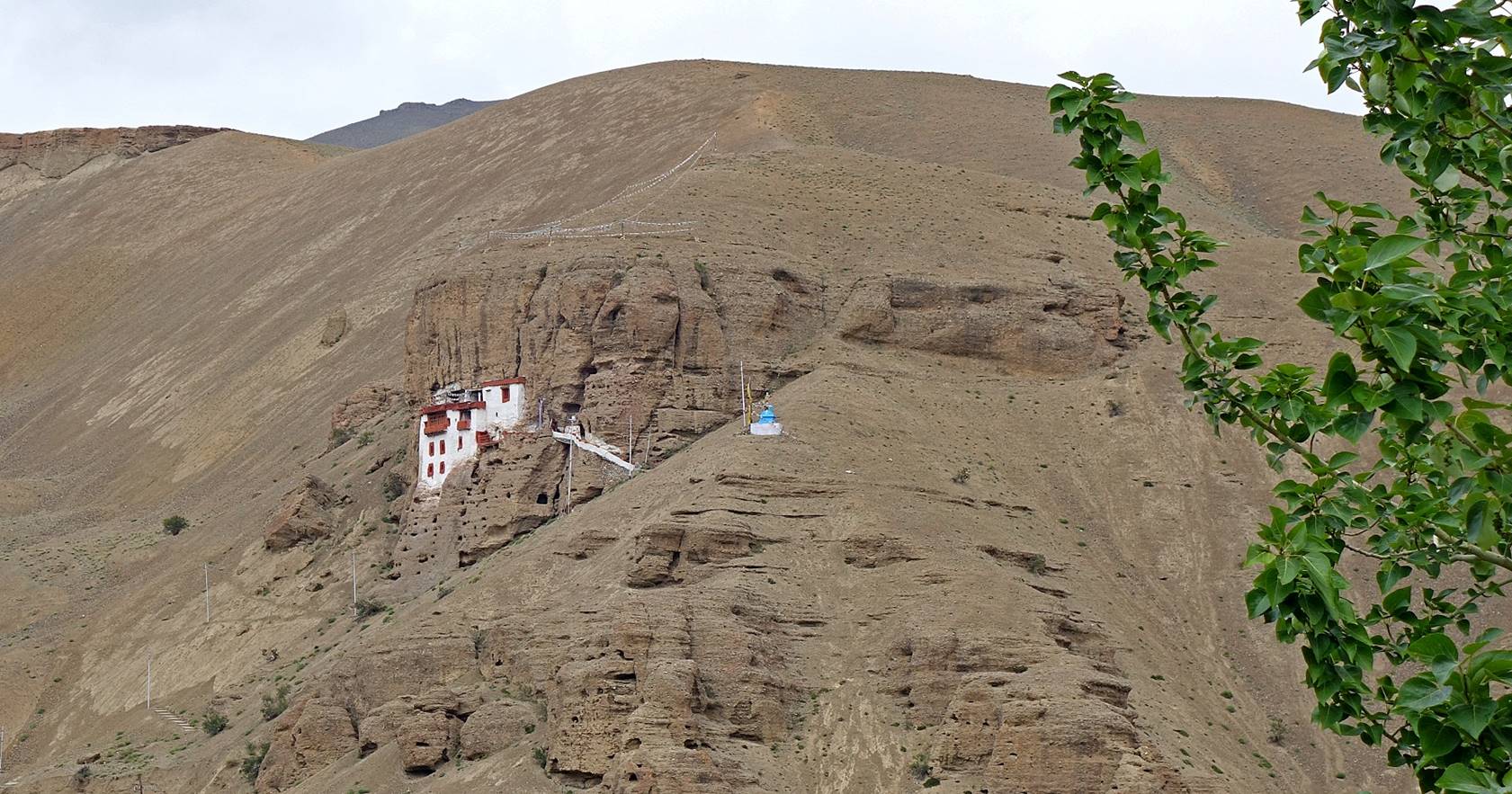
9. The Mysticism Surrounding Ladakh’s Underground Monks
Ladakh’s underground monks have long been shrouded in mysticism, attracting spiritual seekers and explorers alike. The solitary monks who retreat to these hidden caves are believed to possess deep spiritual knowledge, gained through years of meditation and isolation.
Locals tell stories of monks who have achieved supernatural abilities, such as the ability to control their body temperature in freezing conditions or reach states of profound spiritual awareness. While such stories may seem fantastical, they reflect the deep reverence that the people of Ladakh hold for these spiritual ascetics.
10. Zanskar Valley: The Heart of Ladakh’s Meditation Caves
The Zanskar Valley is one of Ladakh’s most remote and rugged regions, home to many of the area’s secret meditation caves. Monks seeking spiritual solitude often retreat to this valley, which offers both physical isolation and a breathtaking backdrop for meditation.
The valley is accessible through challenging trekking routes, and visitors can explore not only the caves but also some of Ladakh’s oldest monasteries, such as Phuktal Monastery, which is built into a cliffside and offers access to nearby meditation caves.
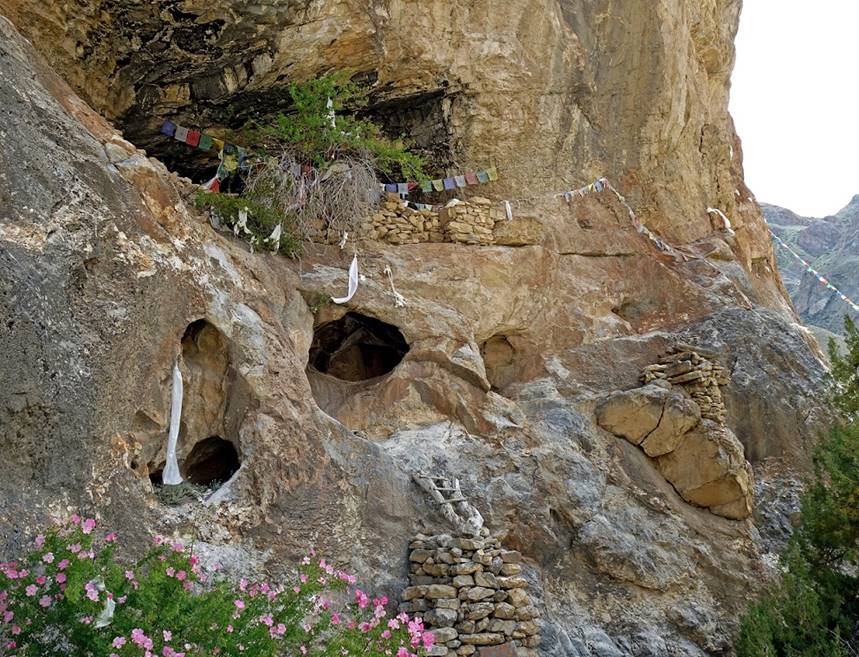
11. The Role of Tibetan Buddhism in Ladakh’s Meditation Practices
Tibetan Buddhism plays a pivotal role in the spiritual practices of Ladakh’s monks. The monks who meditate in the caves follow traditions derived from Tibetan teachings, which emphasize deep meditation, mindfulness, and the pursuit of enlightenment.
These teachings have been passed down through generations of monks, creating a spiritual lineage that connects Ladakh’s meditation caves to a broader Buddhist tradition.
12. The Enduring Legacy of Ladakh’s Meditation Caves
Ladakh’s hidden meditation caves continue to serve as sacred spaces for monks dedicated to Buddhist practices. These caves represent not only a rich historical tradition but also an enduring symbol of the power of isolation and meditation in achieving spiritual insight. For those fortunate enough to visit, these caves offer a rare glimpse into a world of ancient spiritual wisdom that remains largely untouched by the modern world.
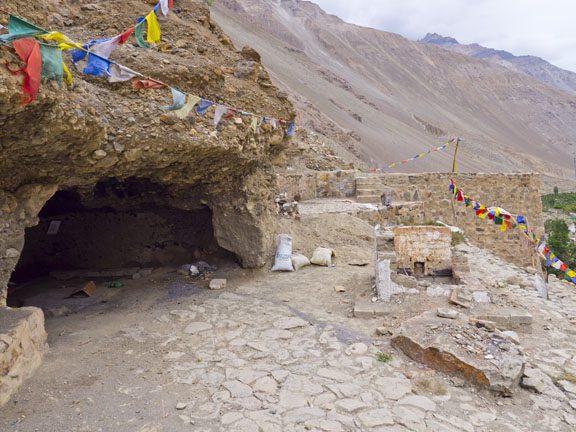
FAQs About Ladakh’s Underground Monks and Meditation Caves
Q1: What are the secret meditation caves in Ladakh?
The secret meditation caves in Ladakh are remote, hidden spaces used by Buddhist monks for deep meditation and spiritual practices. These caves are often located in secluded areas of the Himalayas.
Q2: How do monks live in these underground caves?
Monks live a simple, ascetic lifestyle in these caves, often relying on local villagers for food and practicing meditation in isolation for months or even years.
Q3: Can tourists visit the meditation caves in Ladakh?
Yes, some meditation caves are accessible to tourists, but it’s important to be respectful of these sacred spaces. Many are located on trekking routes such as the Zanskar Valley trek.
Q4: What is the spiritual significance of these caves?
The caves offer monks a place for intense meditation, free from distractions. This isolation helps them achieve spiritual clarity and connection with the divine.
Q5: What are the best trekking routes to reach these caves?
Popular trekking routes to access the meditation caves include the Zanskar Valley Trek, Markha Valley Trek, and Phuktal Monastery Trek.
Q6: How do the monks achieve enlightenment in isolation?
Monks use various Buddhist meditation techniques, such as breath-focused meditation and visualization, to achieve deeper spiritual awareness and enlightenment.
Conclusion: The Timeless Beauty of Ladakh’s Hidden Meditation Caves
The secret meditation caves of Ladakh are much more than physical shelters—they represent a profound spiritual journey. Whether you’re a traveler seeking adventure or a spiritual seeker looking for deeper meaning, these caves offer a unique opportunity to explore the rich Buddhist heritage of the Himalayas and witness firsthand the dedication of Ladakh’s underground monks.

